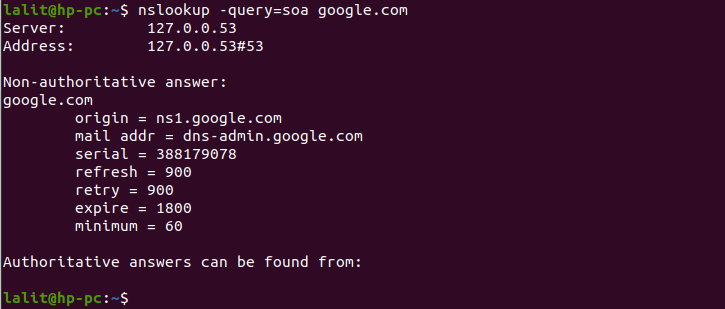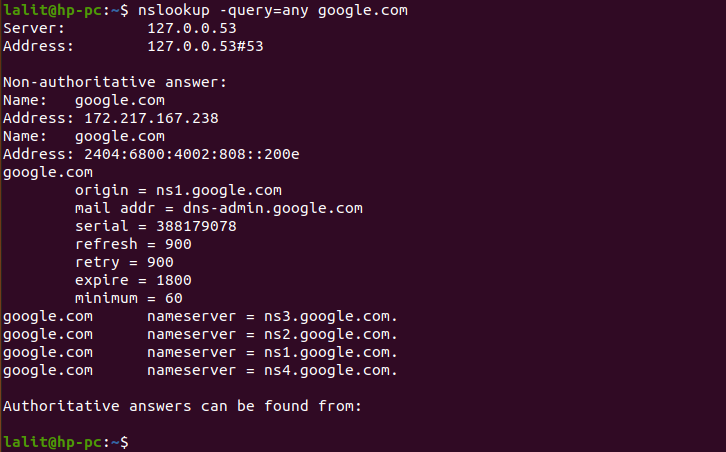The nslookup ( name server lookup ) command is used to get information from a DNS server. This information can include IP address details, MX record of a name server, etc. It is used for troubleshooting DNS-related problems on a system.
This command usually works in two modes interactive and non-interactive modes. In interactive mode, you can query information about various hosts and domains. You can get information on a single host or domain by using the nslookup command in non-interactive mode.
In this article, I will explain how to use the nslookup command in Linux with the help of some examples.
Syntax of the nslookup command
The syntax of how to use the nslookup command in a Linux system is given below.
nslookup [-option] [name | -] [server]
Where you can find the detailed list of options that can be used with the nslookup command on its man page.
Usage of nslookup command Linux
The following examples show the usage of the nslookup command in a Linux system.
Basic use of nslookup
The most basic use of the nslookup command in Linux is using it for querying the details of a domain or host.
Interactive mode
To run the nslookup command in interactive mode using the command as it is given below.
nslookup
Now every time you enter a domain name you will display the details associated with it, this can includes ipv4 address, IPv6 address, name, etc.

Here you can also perform a reverse lookup by entering an IP address instead of a domain name.
Non-interactive mode
You can invoke the nslookup command in non-interactive mode by entering the command followed by the domain name or IP of the host.
For example –
nslookup google.com
This will display the output something like given in the image below.

The output displayed here is the A (Address) record of google.com. A record is used to map a domain name to the IP address. So we can use the nslookup to find the IP address from a domain name or vice versa.
Perform the reverse DNS lookup
By using the nslookup command you can display the domain name from the IP address associated with it.
For example –
nslookup 8.8.8.8

Querying MX record
To display the MX (Mail Exchange) records, use the -query=mx option with nslookup command.
For example –
nslookup -query=mx google.com

Querying ns (Name Server) record
To display the name server records of a host you need to use the -query=ns option with nslookup command.
For example –
nslookup -query=ns google.com
This will display the output something like given in the image below.

Querying SOA (Start of Authority) record
An SOA (Start of Authority) record is a type of record in DNS that contains administrative information about the zone, especially regarding zone transfer.
You can display the SOA by using the -query=soa option with the nslookup command.
For example –
nslookup -query=soa google.com
You can see the output of this command in the given image.

Querying all the available DNS records
By using the option -query=any you can display all DNS records of a host or domain.
For example –
nslookup -query=any google.com
This will display the given output.

For more information, you can check the manual page of the nslookup command by using –
man nslookup
Conclusion
I hope now you get an understanding of how to use the nslookup command in Linux. For any query write us in the comments below.